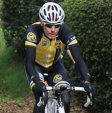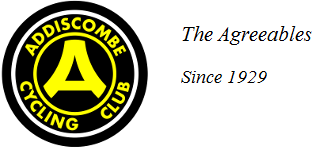Someone was asking about this the other day so have copied and pasted the basics below.
Cheers
Marek....
Training zones are based on a percentage window (60% to 70%) of your maximum heart rate. Within each training zone subtle physiological effects take place to enhance your fitness.
The Energy Efficient or Recovery Zone - 60% to 70%
Training within this zone develops basic endurance and aerobic capacity. All easy recovery running should be completed at a maximum of 70 %. Another advantage to running in this zone is that while you are happily fat burning you may lose weight and you will be allowing your muscles to re-energise with glycogen, which has been expended during those faster paced work-outs. Check out the Fat burning zone page.
The Aerobic Zone - 70% to 80%
Training in this zone will develop your cardiovascular system. The body's ability to transport oxygen to, and carbon dioxide away from, the working muscles can be developed and improved. As you become fitter and stronger from training in this zone it will be possible to run some of your long weekend runs at up to 75%, so getting the benefits of some fat burning and improved aerobic capacity.
The Anaerobic Zone - 80% to 90%
Training in this zone will develop your lactic acid system. In this zone your individual anaerobic threshold is found - sometimes referred to the point of deflection (POD). During these heart rates the amount of fat being utilised as the main source of energy is greatly reduced and glycogen stored in the muscle is predominantly used. One of the by-products of burning this glycogen, is the runners worst enemy, lactic acid. There is a point at which the body can no longer remove the lactic acid from the working muscles quickly enough. This happens at an individual heart rate for us all and is accompanied by a rapid rise in heart rate and a slowing of your running pace. This is your anaerobic threshold or POD. Through the correct training it is possible to delay the POD by being able to increase your ability to deal with the lactic acid for a longer period of time or by pushing the POD higher.
The Red Line Zone 90% to 100%
Training in this zone will only be possible for short periods of time. It effectively trains your fast twitch muscle fibres and helps to develop speed. This zone is reserved for interval running and only the very fit are able to train effectively within this zone.
Resting Heart Rate
To determine your resting heart rate (RHR) is very easy. Find somewhere nice and quite, lie down and relax. Position a watch or clock where you can see the second hand. After 20 minutes remain where you are, do not sit up, and determine your pulse rate (beats/min). This is your RHR.
If you have a heart rate monitor then put it on before you lie down. After the 20 minutes check the recordings and identify the lowest value achieved. This will be your RHR.
As you get fitter your heart becomes more efficient at pumping blood around the body. As a result you will find your resting heart rate gets lower so you will need to check your RHR on a regular basis (e.g. Monthly).
Calculation of a zone value
The calculation of a zone value, X%, is performed in the following way:
Subtract your RHR from your MHR giving us your working heart rate (WHR)
Calculate the required X% on the WHR giving us "Z"
Add "Z" and your RHR together to give us the final value
Example : The athlete's MHR is 180 and her RHR is 60 - determine the 70% value
MHR - RHR = 180 - 60 = 120
70% of 120 = 84
84 + RHR = 84 + 60 = 144 bpm
Training Zone Heart Rate Calculator
The calculator determines your maximum heart rate (MHR) based on the algorithm: 217 - ( age * 0.85 ). To accurately determine your MHR you should consider conducting a Stress Test.
Enter your age, resting heart rate and the lower and upper training zone values (%) and then select the 'Calculate' button.
Age years Max Heart Rate bpm
Resting Heart Rate bpm Working Heart Rate bpm
Lower Training Zone % which is a Heart Rate of bpm
Upper Training Zone % which is a Heart Rate of bpm
Heart Rate Limits
8 posts
• Page 1 of 1
[quote]The calculator determines your maximum heart rate (MHR) based on the algorithm: 217 - ( age * 0.85 ). To accurately determine your MHR you should consider conducting a Stress Test.
It should be noted that the 'algorithm' you use here (a lot of people use the 220-your age version) is often wildly inacurate.So much so that it is effectively useless for guaging your heart rate zones.
As you say, doing a ramp test is the only certain way of finding out your MHR. Even just pushing yourself to your limit on a hill (with a pulse meter) gives you a prety good idea of what your MHR is.
- LUDWIG
A good piece of software for calculatin your ranges once you have a max heart rate is http://www.machine-software.co.uk
Best way for finding your max is a King Cycle/Ramp test
Best way for finding your max is a King Cycle/Ramp test
-

DavidKennett - lives on this board 24/7!!!
- Posts: 464
- Joined: Fri Dec 20, 2002 4:35 pm
- Location: Kenley
heart rate for training purposes is broken down into 6 levels.
I have the percentages written down at home for each zone and the effects of working in each zone on specific fitness excersises.
if anyone is interested I can email them a copy of a good table of what zone does what for your training.
I have the percentages written down at home for each zone and the effects of working in each zone on specific fitness excersises.
if anyone is interested I can email them a copy of a good table of what zone does what for your training.
- JayneToyne
- ...
- Posts: 188
- Joined: Thu Jan 16, 2003 5:25 pm
- Location: Croydon
MHR
I've just been reading the stuff on HRs and zones but was wondering if anyone could tell be how to carry out a Ramp Test or a Stress Test? Can I do one on a turbo trainer indoors?
I've got a HRM but really don't use it further than a new toy to give me more figures to flick between on a ride.
Thanks in advance.
Andy
I've got a HRM but really don't use it further than a new toy to give me more figures to flick between on a ride.
Thanks in advance.
Andy
- andycarter
- is new here, be extra Agreeable to them!
- Posts: 17
- Joined: Fri Feb 13, 2004 1:42 pm
A ramp test is not pleasant, so be prepared to sweat, suffer and even puke. But it is the only reliable way of determining your max HR and then work out training zones.
On an indoor trainer, first make sure you're well rested and well hydrated. It's best to have someone to help to watch the clock and write down the heart rates, but it is possible to do it alone. Warm up well for say 10 minutes, then start on the big ring and something like your 3rd biggest sprocket. Pedal at a reasonably fast cadence (90-100rpm) for the whole test. After two minutes write down the HR and change to the next smallest sprocket. Repeat all the way to the smallest sprocket or until you can't maintain the cadence. By the end you should be completely knackered and have reached your max HR. It's possible that you could reach your smallest sprocket and still have more to give, in which case you might have to do it again with more resistance on the trainer, or just sprint like hell until you can't do any more.
On an indoor trainer, first make sure you're well rested and well hydrated. It's best to have someone to help to watch the clock and write down the heart rates, but it is possible to do it alone. Warm up well for say 10 minutes, then start on the big ring and something like your 3rd biggest sprocket. Pedal at a reasonably fast cadence (90-100rpm) for the whole test. After two minutes write down the HR and change to the next smallest sprocket. Repeat all the way to the smallest sprocket or until you can't maintain the cadence. By the end you should be completely knackered and have reached your max HR. It's possible that you could reach your smallest sprocket and still have more to give, in which case you might have to do it again with more resistance on the trainer, or just sprint like hell until you can't do any more.
-

Jon H - lives on this board 24/7!!!
- Posts: 3392
- Joined: Wed Nov 27, 2002 1:30 pm
- Location: Bromley
-

the other Steve Dennis - lives on this board 24/7!!!
- Posts: 307
- Joined: Fri Dec 06, 2002 3:46 pm
- Location: Chicago
8 posts
• Page 1 of 1
Who is online
Users browsing this forum: No registered users and 6 guests
